The currency system of Ancient Rome was pivotal in shaping the economic landscape of one of history’s most influential empires. Initially reliant on barter, Rome’s transition to coinage began around 300 BC, influenced by Hellenistic practices.
The introduction of coins like the denarius, sestertius, and aureus marked a significant evolution. These coins facilitated trade, provided a standardized medium of exchange, and underpinned the robust Roman economy. Their widespread acceptance not only enhanced trade efficiency but also instilled economic stability across vast distances.
The Denarius: Backbone of Roman Coinage
First minted during the 2nd Punic War (218 – 201 BC), the denarius was a pure silver coin that became the cornerstone of the Roman economy. It maintained its weight and purity for nearly 300 years, facilitating trade, tax collection, and serving as a reliable medium of exchange across the empire. By 85 AD, a single denarius was equivalent to the daily wage of a skilled craftsman, underscoring its value in everyday life.
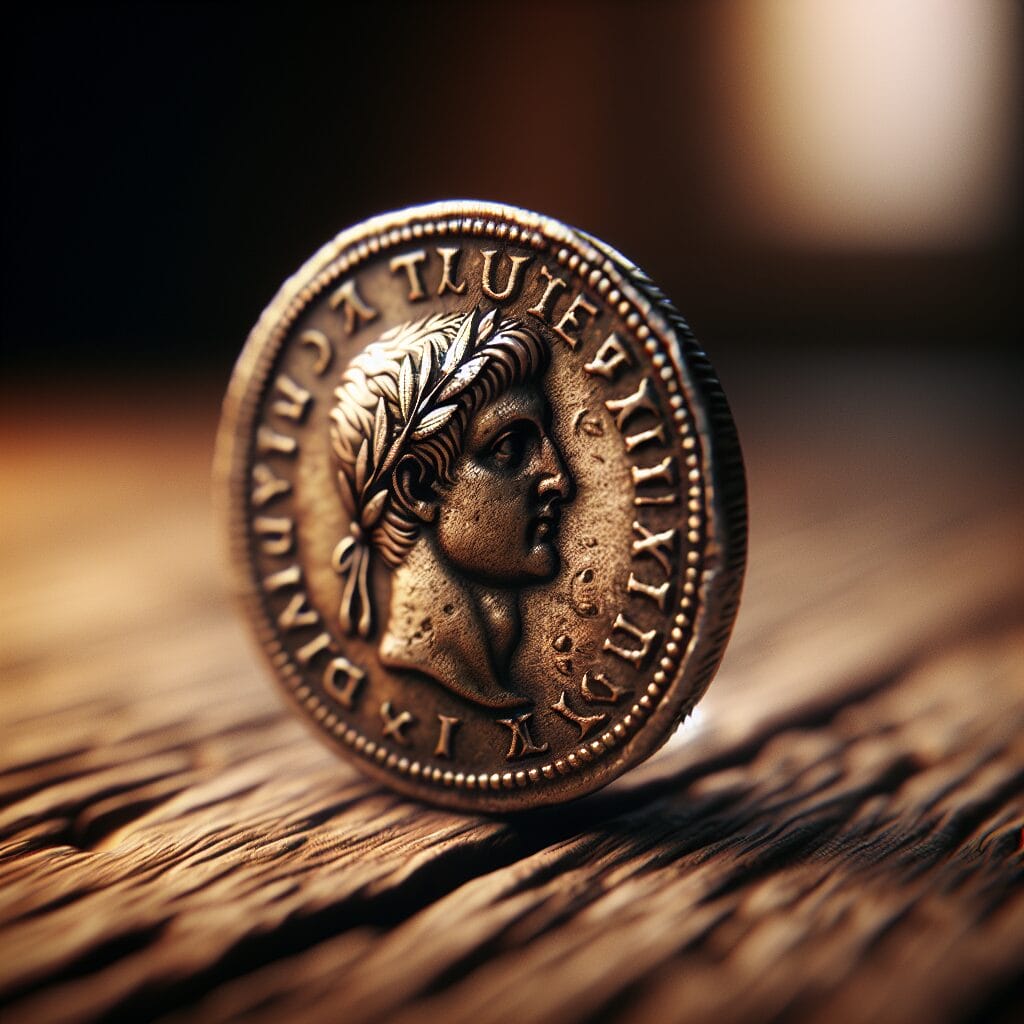
“The denarius was not just a coin; it was a symbol of economic stability,” notes historian John Doe. This coin’s significance extended beyond commerce, embedding itself deeply into the social fabric of Roman society. However, the eventual debasement of the denarius by successive emperors marked the beginning of economic instability, affecting public confidence and societal order. Its history serves as a cautionary tale on the impact of monetary policy on societal stability.
The Sestertius: A Coin of Distinction
In the intricate tapestry of Roman currency, the sestertius emerged as a coin of distinction. Initially introduced in the late Republic, the sestertius was made from bronze and valued at one-quarter of a denarius. This coin played a pivotal role in facilitating larger transactions, such as those conducted by merchants and property owners, thereby bridging the gap between the everyday use of the denarius and the substantial wealth represented by the aureus.
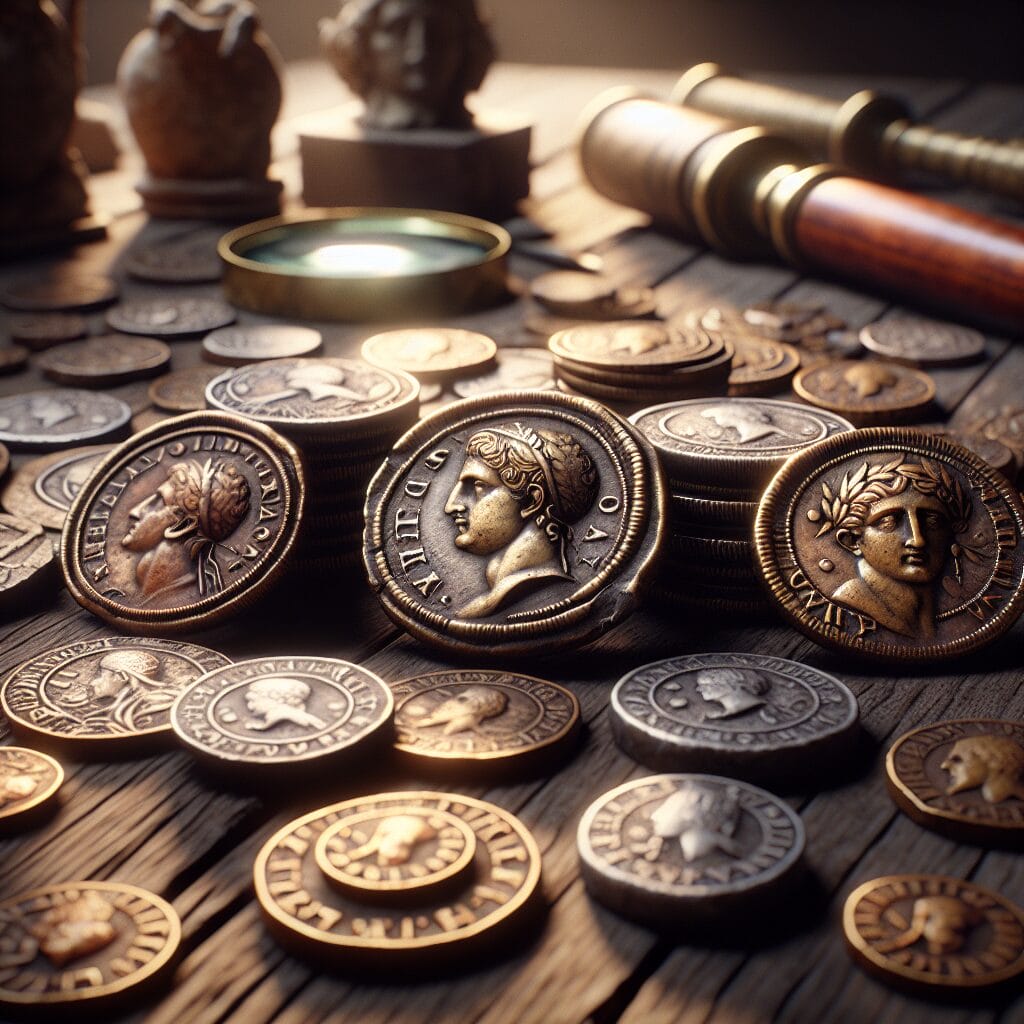
- Valued at a quarter of a denarius
- Made of bronze, allowing for durability
- Utilized in significant commercial transactions
- Enhanced the granularity of the Roman monetary system
The sestertius was not merely a medium of exchange; it symbolized the economic sophistication of Ancient Rome. Its usage in substantial trades underscored its importance in the financial activities of the empire, reflecting the dynamic nature of Roman commerce.
The Aureus: Gold Standard of Rome
The aureus, first introduced during the late Republic, stood as the epitome of wealth and power in ancient Rome. Minted from pure gold, the aureus was not just a currency but a symbol of prestige and economic status. It was often used in high-value transactions, reflecting the affluence of its holders.
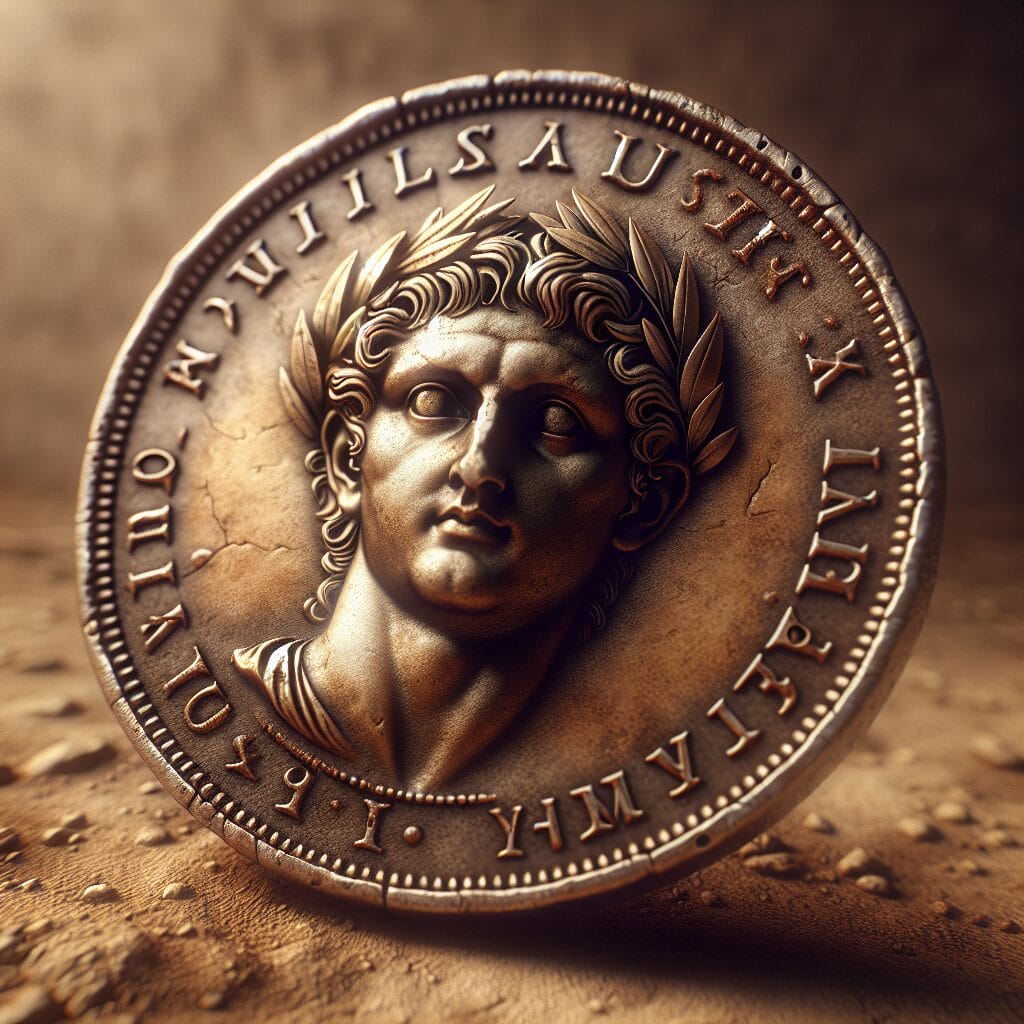
Below is a comparison of the value of different Roman coins:
| Coin | Material | Value in Denarii |
|---|---|---|
| Aureus | Gold | 25 Denarii |
| Denarius | Silver | 1 Denarius |
| Sestertius | Bronze | 0.25 Denarii |
In essence, the aureus was more than a medium of exchange; it was a testament to one’s standing within the Roman hierarchy, playing a crucial role in the socio-economic framework of the empire. Its significance is further underscored by its role in the Roman economy and the impact of currency fluctuations on society.
Facilitation of Trade and Commerce
The standardization of coinage in ancient Rome played a pivotal role in unifying the diverse economies that spanned the vast territories of the empire. Coins such as the denarius ensured a common medium of exchange, enabling seamless trade across regions with different local practices and products.
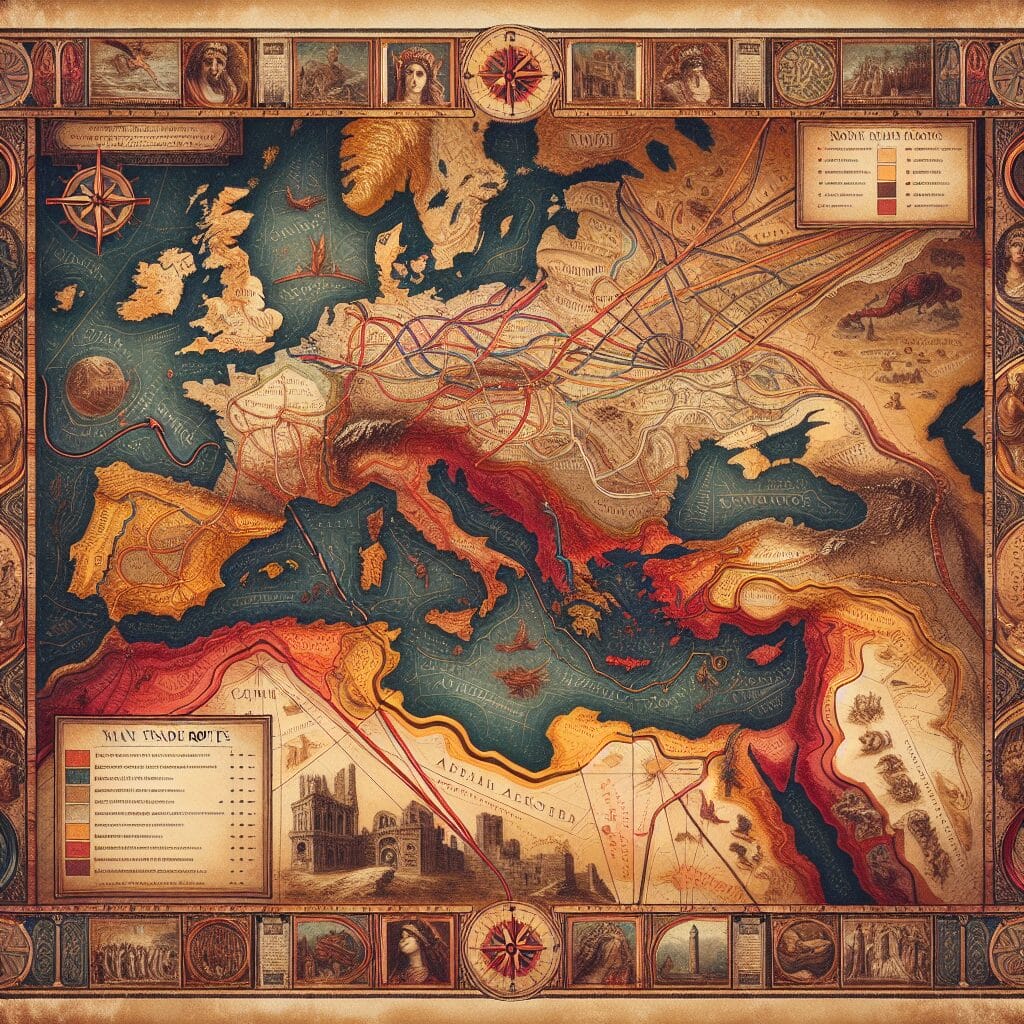
This uniformity in currency was instrumental in expanding Rome’s trade network. By the 1st century AD, trade routes stretching from Britain to the Near East thrived under this system, bolstering the Roman economy significantly. The establishment of standardized pricing through coins like the denarius facilitated not only local commerce but also international trade, enhancing economic stability and growth.
The impact on the Roman economy was profound. Historical records suggest that the volume of trade during the height of the empire was tenfold compared to earlier periods. This economic prosperity was largely driven by the confidence and reliability that standardized coinage brought to both merchants and consumers alike. Thus, Roman currency not only unified various economies but also laid the groundwork for a thriving commercial empire.
Inflation and Coin Debasement
In Ancient Rome, inflation was largely driven by strategic yet detrimental monetary policies. The debasement of coinage was a critical factor, as emperors like Caracalla reduced the silver content in coins such as the denarius from 95% to a mere 0.5% by 268 AD. This drastic reduction aimed to fund the expanding military and administrative costs, yet it led to a loss of trust in the currency.
“The reliance on increasingly worthless currency triggered hyperinflation, soaring taxes, and a paralyzed economy.”
The economic consequences were profound. As the silver content of the denarius plummeted, citizens required more coins to purchase the same goods, leading to rampant inflation. By 265 AD, prices had surged by 1,000%, forcing the economy to rely on barter systems as trade became localized and fractured. This monetary instability contributed significantly to the decline of the Roman Empire, as trust in the currency eroded, and economic disparities widened between those with access to gold and the broader populace.
Political Influences on Currency
The role of Roman emperors in currency production was profound and multifaceted. Emperors wielded their power over the minting process to assert their control over economic resources, often embedding their images and propaganda on coins to reinforce their legitimacy. This practice was not only about economic utility but also about political symbolism, mirroring similar strategies seen in other historical contexts such as Ming China.
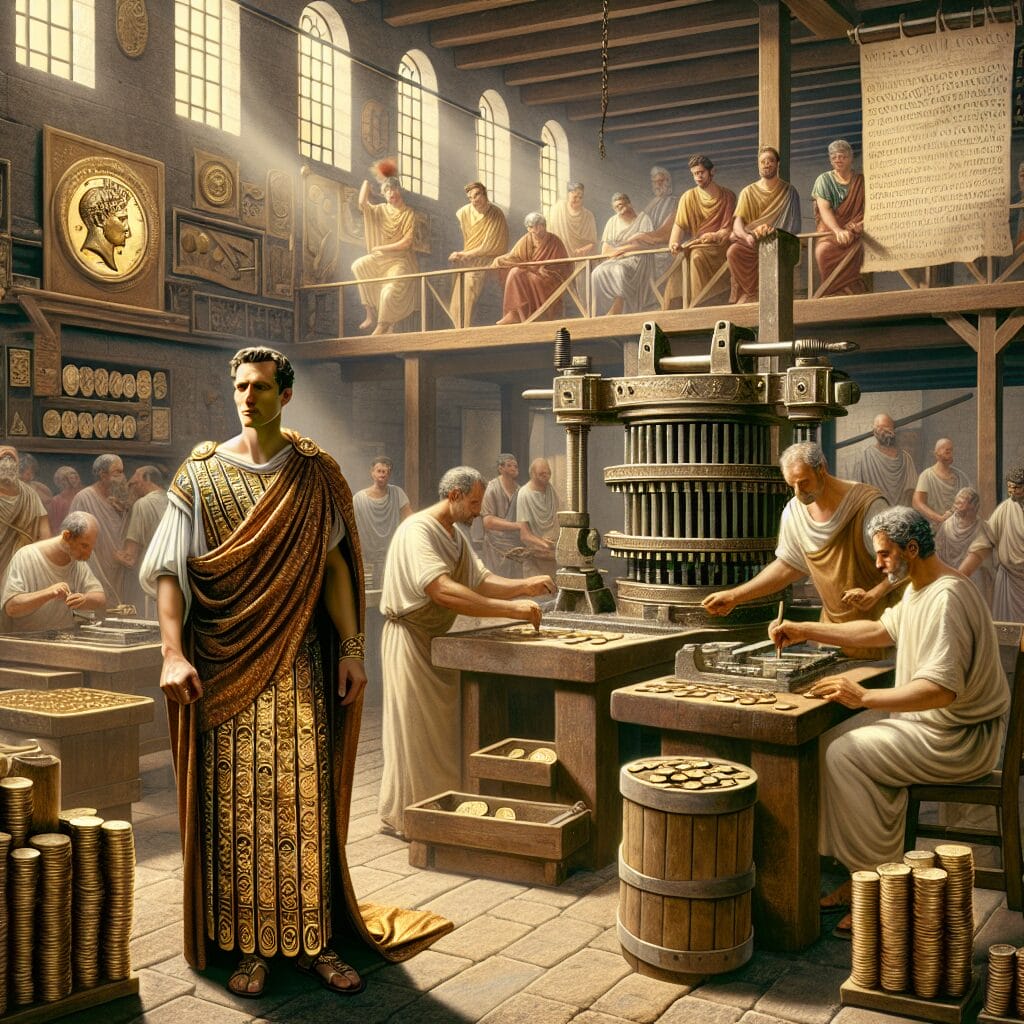
Political instability, however, posed significant challenges to the currency’s stability. During the third century AD, the devaluation of the denarius was exacerbated by excessive military expenditures and the introduction of lower-value coins like the antoninianus. The tumultuous period that followed the Severan dynasty saw numerous emperors in rapid succession, each struggling to maintain currency value amidst economic strain.
The repeated devaluation and inconsistency in coinage quality were symptoms of broader political turbulence, reflecting a direct link between imperial power struggles and economic decline. These factors contributed to the eventual reliance on barter and the destabilization of long-distance trade, highlighting the critical impact of political dynamics on Roman currency’s evolution.
Evolution of Roman Coinage
The transformation of Roman coinage offers a fascinating glimpse into the political and economic shifts of ancient Rome. Key periods of change were marked by significant alterations in coin design and minting technology, reflecting the evolving needs and challenges of the empire.
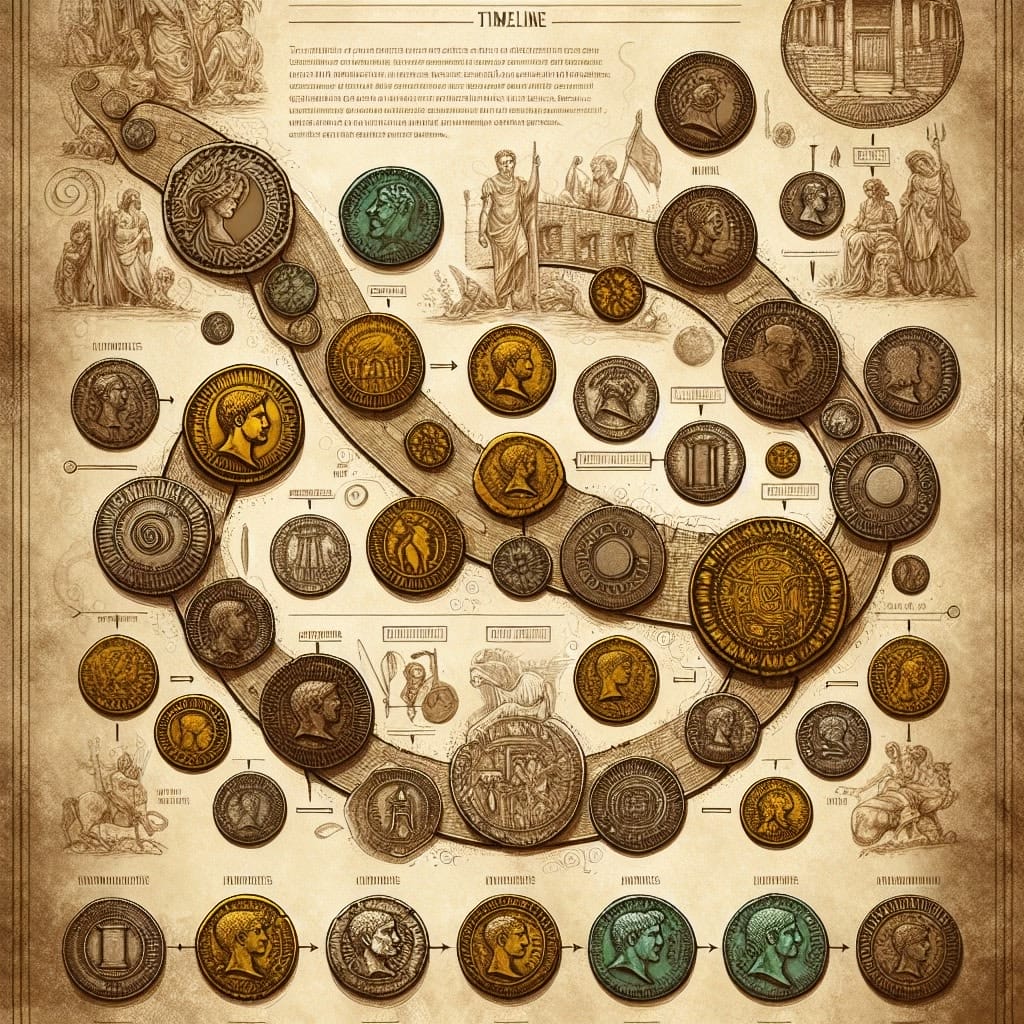
Initially, the denarius reigned supreme, its design embodying the stability and authority of the Roman state. Over time, as political instability ensued, the coin’s intrinsic value was manipulated, decreasing its silver content and altering its appearance to accommodate economic pressures.
The introduction of the aureus marked another key evolution, showcasing advancements in minting techniques that allowed for more intricate designs and inscriptions. These changes were not merely aesthetic; they served as a means for emperors to imprint their legacy and assert their dominion.
By the third century AD, technological innovations in minting facilitated the production of coins with greater consistency and detail, yet these advancements could not fully counteract the economic strain caused by political turmoil. As such, the evolution of Roman coinage was both a reflection of technological progress and an indicator of the broader socio-political landscape.
Cultural Significance of Roman Coins
Roman coins were far more than a mere medium of exchange; they were a profound reflection of the society that minted them. The iconography and inscriptions on these coins offer a window into the values, power structures, and religious beliefs of ancient Rome. Emperors utilized coins to convey their authority, with portraits of themselves and their families serving as a form of propaganda and power, immortalizing their reign and achievements in the public consciousness.
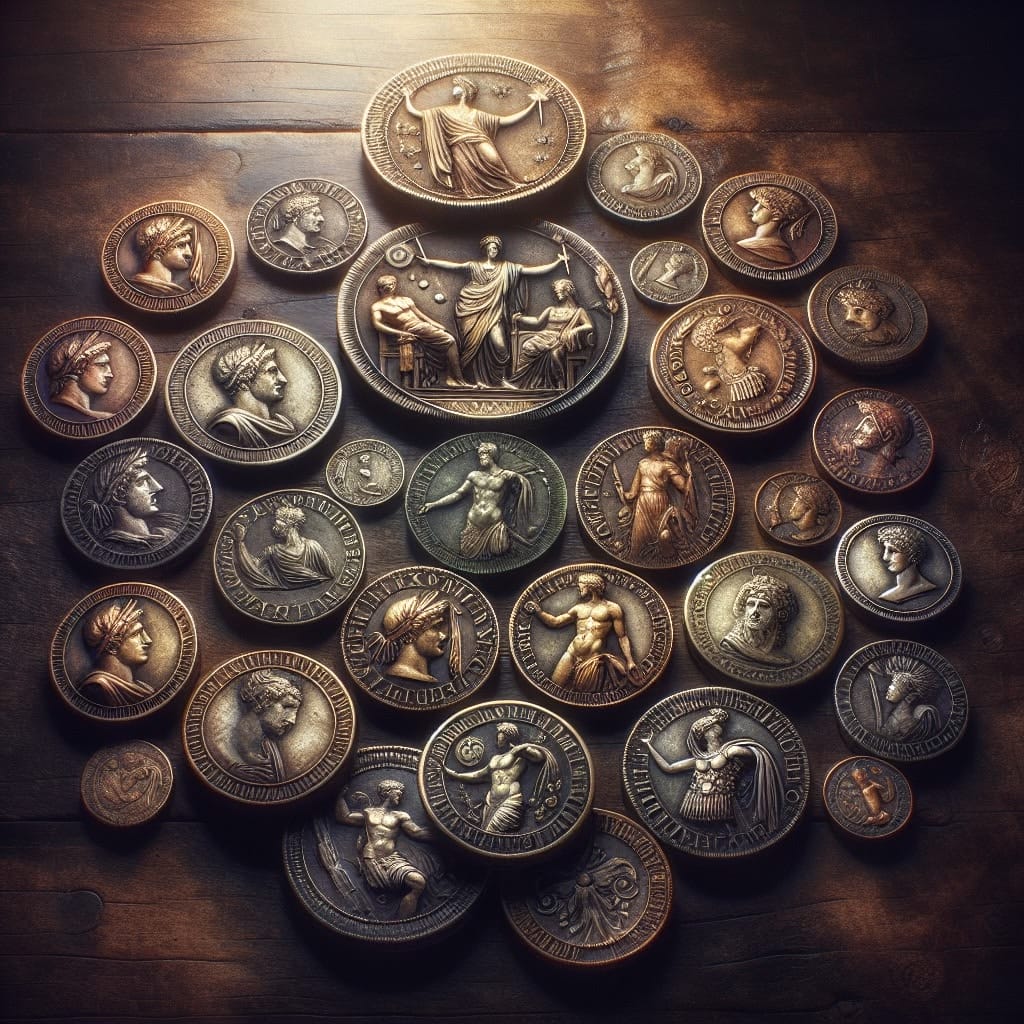
Moreover, coins bore images of gods and mythological figures, such as Jupiter and Mars, reinforcing the divine right of emperors to rule—a practice that linked them to the pantheon of gods. This strategic use of imagery extended to commemorating significant events and architectural triumphs, effectively documenting the empire’s grandeur and its socio-economic evolution.
Political messaging was also prominent, with coins serving as a tool for emperors to influence public perception. For instance, Julius Caesar’s portrayal on currency marked a pivotal shift, solidifying the tradition of using coins for personal and political promotion. Through these means, Roman coins transcended their economic function, becoming enduring symbols of political and cultural propaganda.
Coins in Military Campaigns
The strategic use of coins in military campaigns was a cornerstone of Roman military finance and morale. Coins such as the denarius and aureus played a critical role in funding military operations, providing the necessary resources to sustain prolonged campaigns. These coins were minted to pay soldiers, ensuring a steady and reliable flow of currency to support the Roman legions as they expanded the empire’s borders.
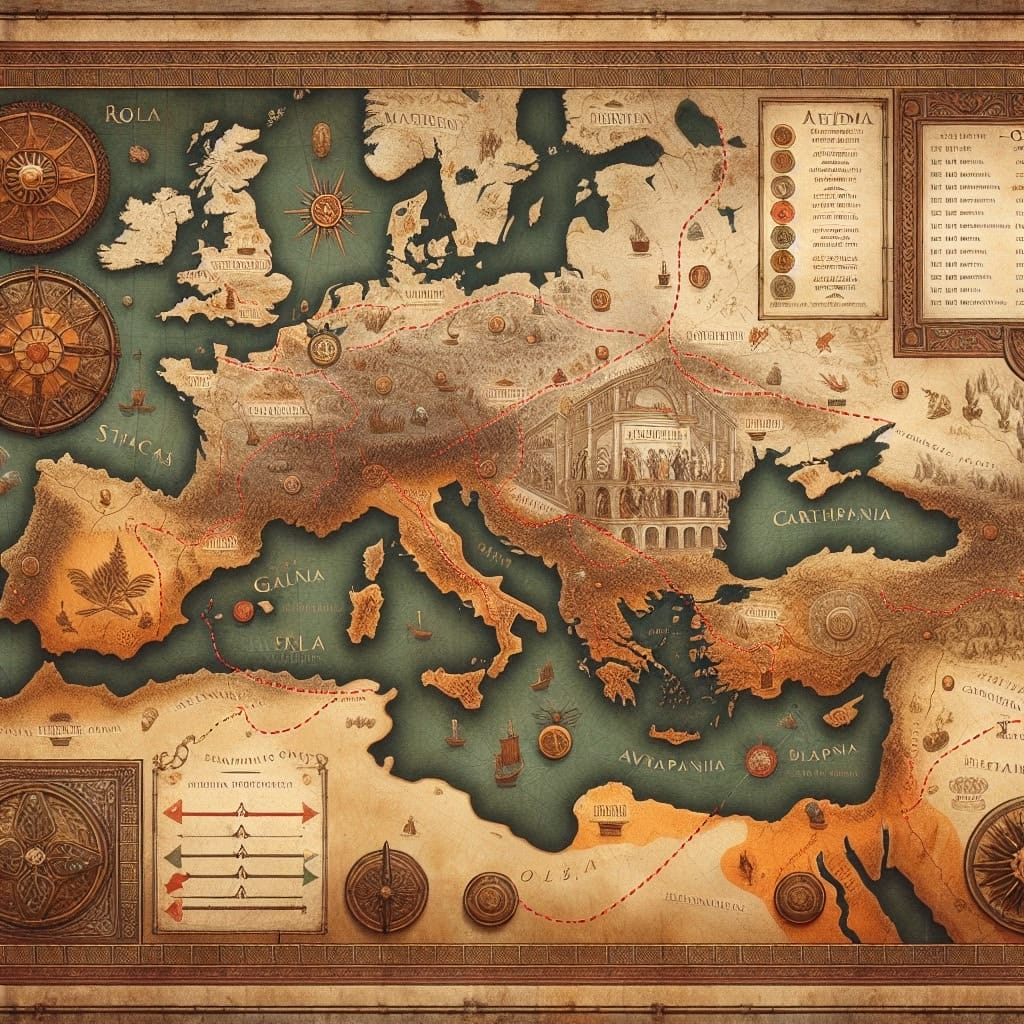
In addition to their monetary value, coins served as a potent tool for boosting morale and loyalty among the troops. The imagery and inscriptions on these coins often depicted victorious battles and deities, reinforcing the soldiers’ sense of purpose and connection to the empire’s divine mission. Such iconography acted as a powerful propaganda tool, reminding soldiers of their role in the grand narrative of Roman supremacy and civilization.
Maps of coin distribution in various military campaigns reveal the strategic allocation of currency, highlighting the logistical prowess of Roman commanders. By ensuring the timely distribution of coins, the Roman state maintained the loyalty and effectiveness of its military forces, underpinning the empire’s enduring success in warfare.
Decline of Roman Coinage
The decline of Roman coinage was marked by a significant reduction in both quality and circulation, largely driven by economic and political turmoil. As the empire faced mounting fiscal pressures, the practice of debasement of currency became widespread. This involved reducing the precious metal content in coins, particularly silver, to stretch resources further. Consequently, this led to a decrease in public trust and the devaluation of currency.
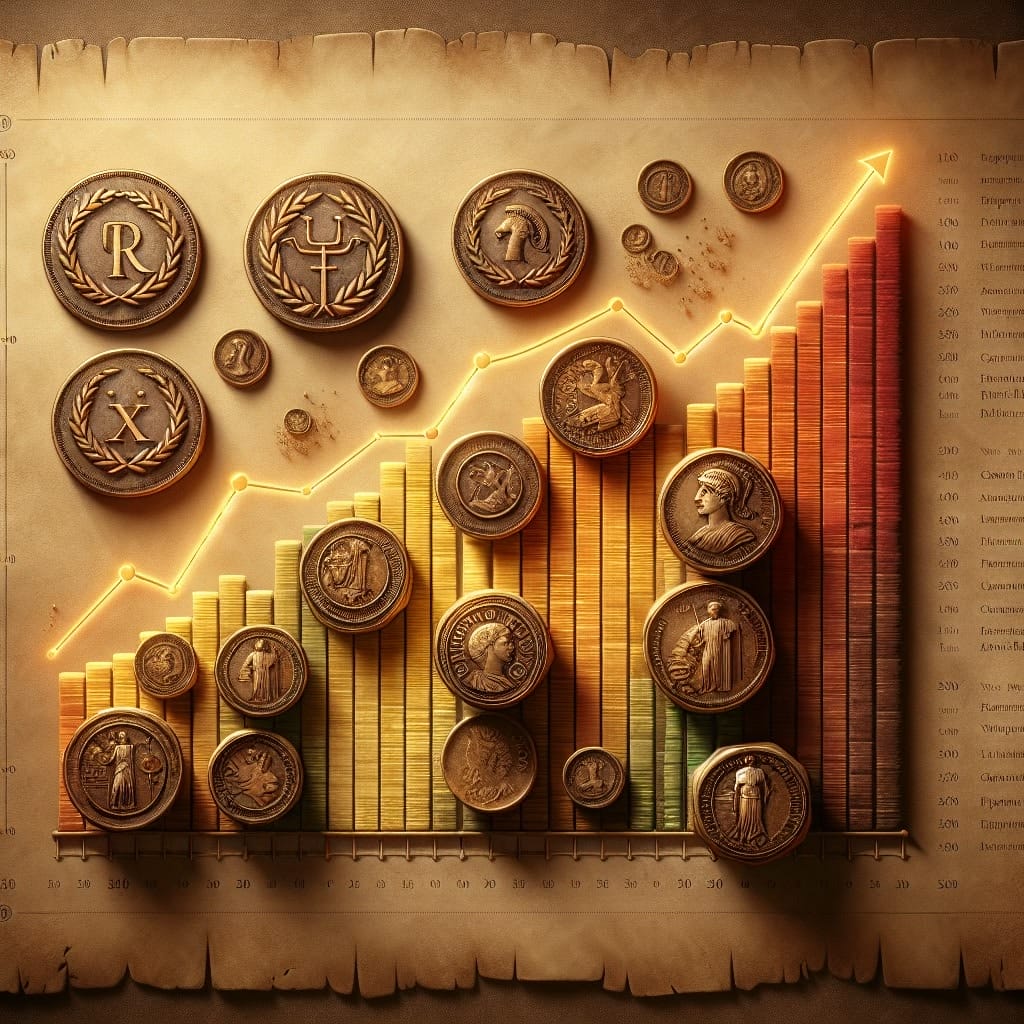
“The degradation of Roman coinage underscored the empire’s deepening economic woes.” The reduced quality of coins reflected broader economic challenges, including rampant inflation and public dissatisfaction. These issues were exacerbated during times of political instability, as successive emperors sought to finance their reigns and military campaigns by minting increasingly debased coins.
The economic consequences of this decline were profound, leading to disruptions in trade and a loss of confidence among the populace. As the value of currency dwindled, so too did its effectiveness as a medium of exchange, crippling the once-thriving Roman economy. This deterioration in coinage signaled a broader decline in the empire’s economic and political stability.
Legacy of Roman Currency
The legacy of Roman currency is profound, with lasting impacts on modern economies. Romans pioneered the standardization of coinage, creating a system that facilitated trade across their expansive empire. This model of producing a diverse array of denominations laid the groundwork for contemporary monetary systems, influencing the development of currencies throughout Europe and beyond.
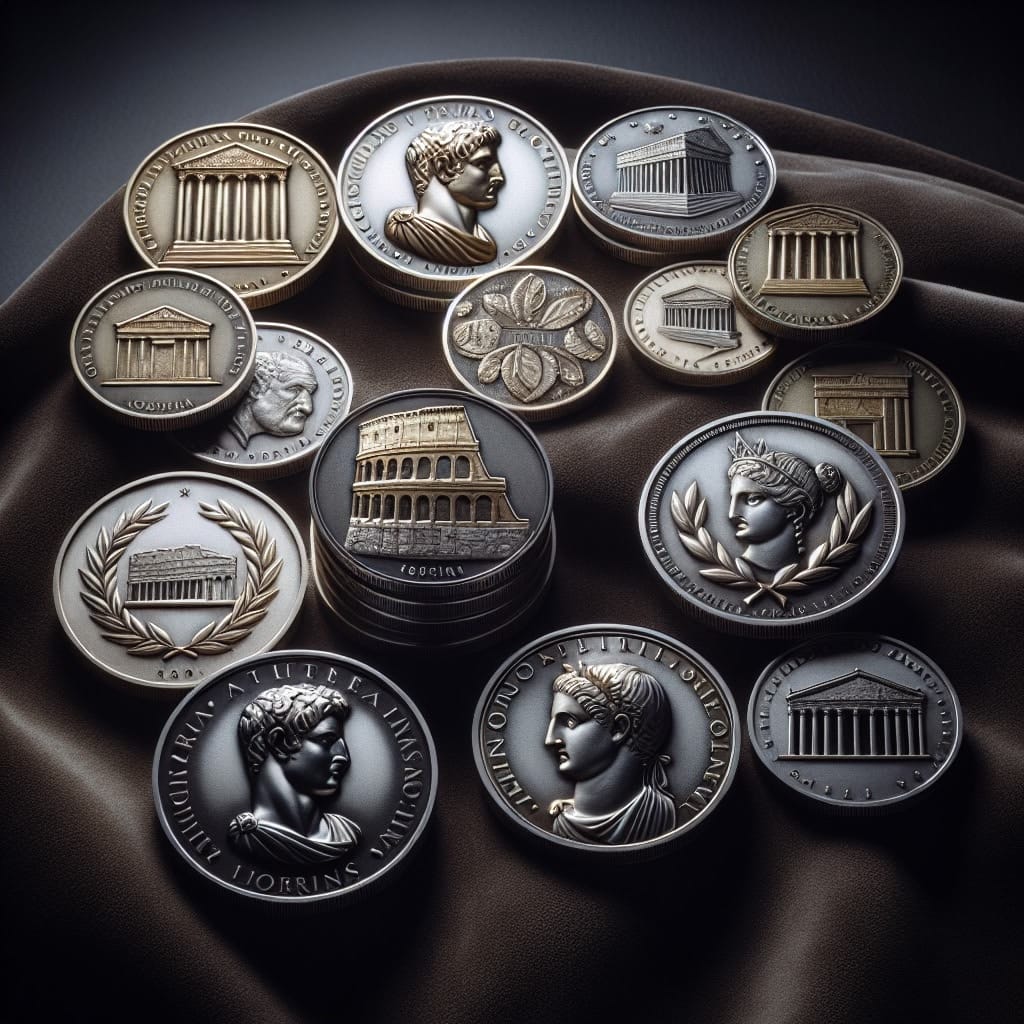
Today, the influence of Roman coinage is evident in the way modern currencies are designed and circulated. Coins such as the denarius became templates for subsequent European currencies, illustrating the enduring impact of Roman innovations. Moreover, the use of imagery, such as emperors and gods on Roman coins, introduced the concept of currency as a tool for propaganda, a practice that persists in modern times.
In the field of numismatics, Roman coins are treasured not only for their historical significance but also for their artistic beauty. These coins serve as enduring symbols, providing insights into Roman society and preserving the cultural heritage of ancient civilizations. Collectors around the world continue to seek Roman coins, appreciating their role as tangible connections to history.
Frequently Asked Questions
Exploring Roman currency often raises intriguing questions. Here, we address some common queries and clarify misconceptions about these ancient coins.
What were the main types of Roman coins?
Roman coins included the denarius, sestertius, and aureus, among others. Each served different purposes in daily transactions and trade.
Why are Roman coins significant in numismatics?
Roman coins are highly valued in numismatics for their historical and artistic significance, providing insights into Roman society and culture.
Did all Roman coins feature emperors?
While many coins depicted emperors, others showcased gods or symbols of Rome’s power, serving as tools of propaganda.
How did Roman coinage influence modern currency systems?
The standardization and widespread acceptance of Roman coinage laid the groundwork for modern monetary systems, influencing the design and function of contemporary currencies.
Are Roman coins rare?
Some Roman coins are common, while others, especially those with minting errors or from specific periods, are considered rare and highly collectible.
Conclusion
The exploration of Roman currency reveals its pivotal role in shaping economic systems, from the standardized denarius to the prestigious aureus. These coins not only facilitated trade but also served as tools of propaganda and cultural reflection. Today, Roman coins are treasured in numismatics, symbolizing a lasting connection to ancient society. Their influence endures, highlighting the profound legacy of Rome in modern monetary practices.

